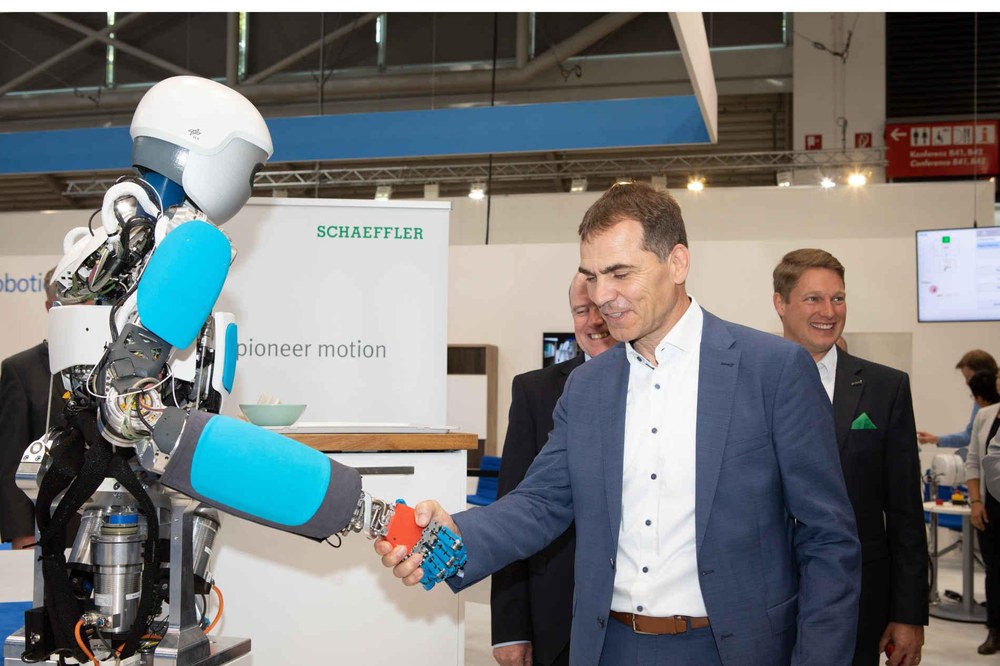Selected examples with collaboration partners
OSIRIS

OSIRIS is a DLR-developed laser communications terminal that includes components for power supply and laser sources for data transmission for small satellites. Earth observation satellites used for weather forecasting, climate research, surveying and civil protection generate very large amounts of data. Today’s radio systems are coming up against their limits in this area. By contrast, optical transmission processes offer the ability to transmit data at a significantly higher rate. Together with industry partner Tesat-Spacecom (TESAT), DLR is set to develop a laser terminal and take it into series production.
CoBra
CoBra. Industry sectors with high energy requirements, such as chemicals and petrochemicals, iron and steel, cement, paper and aluminium, urgently need carbon-neutral process heat with temperatures of up to 500 degrees Celsius. As the heat pumps currently available on the market cannot yet meet this demand, a demonstrator for high-performance high-temperature heat pumps will be built at DLR’s site in Cottbus by the end of 2024. A number of industry partners, including BASF, Sachsenmilch and Wacker Chemie, have expressed their interest in advancing this technology together with DLR.

Compasso
Compasso will bring together innovative optical clock technologies for satellite applications. As part of the project, optical clocks, iodine clocks, a frequency comb based on quantum technology and a laser terminal will all be tested on board the International Space Station ISS for two years. The Compasso demonstrator is intended to show that the new technologies are more accurate, less susceptible to interference and cheaper than the previous ‘clock ensemble’ of the first-generation Galileo satellites. The new technologies will benefit users of the European Galileo system, which is used for everything from smartphones to highly automated driving systems and land registry offices. The project infrastructure is being set up in conjunction with industry partners such as Tesat, Airbus, SpaceTech-Immenstaat and the Ferdinand Braun Institute. The European Space Agency (ESA), European Global Navigation Satellite Systems Agency (EUSPA), Federal Ministry of Transport and Digital Infrastructure (BMVI) and Federal Ministry for Economic Affairs and Climate Action (BMWK) are observers.
HALI – a green wave for emergency vehicles
HALI – a green wave for emergency vehicles. To ensure that ambulances, police cars and fire engines get to incident sites faster and more safely, DLR is working with partners such as the Fraunhofer Institute IIS, the Berlin police and fire brigade, Siemens, Airbus and IABG and Alarm Dispatcher Systems GmbH Partners on solutions for automated, satellite-based vehicle detection via traffic lights. This system enables centrally networked traffic lights to clear the way for emergency vehicles. The combination of Galileo PRS receivers in emergency vehicles and modern communication and traffic technology in traffic lights has passed its first practical test in Berlin. In order for the system to be prepared for real-life operation, the PRS receivers, which have previously been run in laboratory conditions, have been made more robust and reliable for everyday use, including for tough weather and road conditions.

iLint hydrogen trains in the local transport network
iLint hydrogen trains in the local transport network. The world’s first network to include hydrogen trains in passenger service began in Bremervörde, Germany, at the end of August 2022. The fuel cell drive train and system integration for the iLint railcar were jointly developed by DLR and Alstom. The 14 vehicles powered by fuel cell drives belong to Landesnahverkehrsgesellschaft Niedersachsen mbH. Other partners include the Elbe-Weser railway and transport company and the Linde gas company. Another iLint train was delivered for the Frankfurt region in November 2022.
Robotics in industrial production
Robotics in industrial production. The DLR Institute of Robotics and Mechatronics and Schaeffler AG are working on robotics in industrial production environments. The Institute develops systems and methods that enable the flexible use of robotic systems by researching safe interaction between humans and robots, and the autonomous execution of logistics and production processes. Intelligent technologies based on artificial intelligence and higher degrees of automation pave the way for new development and production concepts. Schaeffler also uses robots in production environments and highly automated manufacturing plants worldwide. The expertise of Schaeffler and DLR complement each other strategically. Schaeffler is currently launching a new sensor and drive technology for cobots (collaborative robots), with extensive support from DLR based on its expertise.



